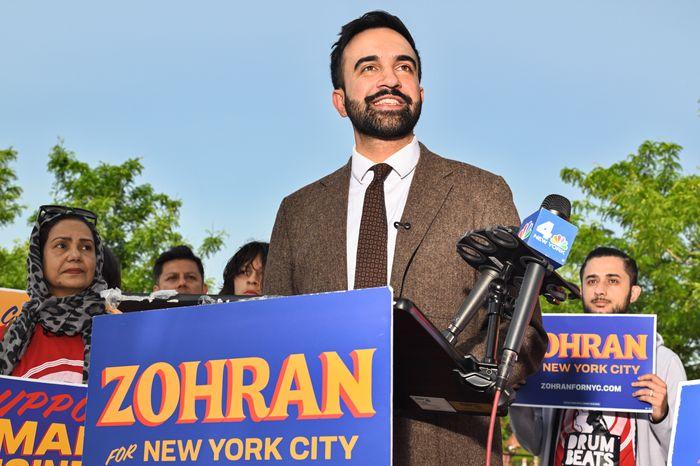Reimagining Free Bus Transit in New York City: Challenges and Opportunities
Brooklyn Assemblyman Zohran Mamdani has championed a transformative vision for New York City’s public transportation: eliminating bus fares entirely. This progressive initiative aims to ease the financial strain on commuters and promote environmental sustainability by encouraging mass transit use. However, the path to implementing a fare-free bus system is fraught with significant financial and operational complexities. City leaders and transit experts are grappling with questions about how to fund such a program sustainably, upgrade infrastructure, and manage increased passenger volumes without compromising service quality.
The primary obstacles include:
- Financial Constraints: Allocating sufficient funds without undermining other essential city services remains a contentious issue.
- Fleet and Infrastructure Expansion: Procuring additional buses and modernizing facilities to accommodate higher ridership demands substantial investment and time.
- System Integration and Management: Seamlessly incorporating free fare policies into existing ticketing frameworks while preventing overcrowding requires meticulous planning.
| Challenge | Severity | Estimated Timeline |
|---|---|---|
| Funding Deficit | High | Long-term |
| Fleet Expansion | Moderate | 6-12 months |
| Fare System Overhaul | Moderate | 3-6 months |
Tackling these challenges through phased implementation and innovative financing could be pivotal in turning this ambitious proposal into a practical urban mobility solution.
Enhancing Transit Equity and Accessibility Through Fare Elimination
Mamdani’s commitment to free bus rides is rooted in addressing systemic inequities that have long hindered marginalized communities’ access to reliable transportation. By removing fare barriers, the initiative promises to alleviate economic hardships for low-income New Yorkers who depend on buses for daily commutes to work, education, and healthcare. This aligns with a growing movement nationwide to recognize transit as a fundamental right rather than a privilege.
Nonetheless, several critical considerations must be addressed:
- Ensuring long-term financial viability without degrading service standards
- Preventing overcrowding and ensuring infrastructure can support increased demand
- Coordinating with existing transit systems to maximize network efficiency and accessibility
| Indicator | Current Figures | Projected Post-Free Fare |
|---|---|---|
| Daily Ridership | Approximately 45,000 | Over 60,000 |
| Annual Fare Revenue | $4.5 million | Zero (subsidized) |
| Equity Disparity | Marked | Reduced |
The initiative’s success hinges on strategic execution and securing dependable funding streams to avoid service degradation. Without careful oversight, the elimination of fares could unintentionally worsen issues like bus delays and maintenance backlogs. Thus, balancing enhanced accessibility with operational sustainability remains a critical challenge that Mamdani’s plan must navigate.
Stakeholder Perspectives on the Feasibility and Benefits of Free Bus Transit
The proposal to offer free bus rides has elicited a spectrum of responses from influential groups. Advocates for sustainable transportation applaud the plan as a vital step toward reducing traffic congestion and lowering greenhouse gas emissions. They emphasize that improved transit access can unlock economic and educational opportunities, particularly in historically underserved neighborhoods. Conversely, fiscal watchdogs and transit administrators caution that without a clear and sustainable funding framework, the initiative risks stalling or compromising service quality.
Community representatives highlight the social benefits but stress the necessity of inclusive planning and comprehensive impact evaluations. Their key concerns include:
- Financial Sustainability: Guaranteeing that funding reallocations do not undermine other essential public services
- Infrastructure Preparedness: Ensuring buses and stations are equipped to handle increased passenger volumes
- Social Justice: Confirming that the benefits reach the most vulnerable populations
- Environmental Outcomes: Verifying measurable reductions in pollution and carbon emissions
| Group | Viewpoint | Main Concern |
|---|---|---|
| Transit Authorities | Operational viability | Funding and capacity constraints |
| Environmental Organizations | Climate impact | Emission reductions |
| Local Commerce | Economic effects | Customer accessibility |
| Community Advocates | Equity and inclusion | Access for marginalized groups |
Innovative Financing and Phased Rollout Strategies to Propel Free Bus Transit
Overcoming the financial barriers to a fare-free bus system demands creative funding solutions. Public-private partnerships (PPPs) offer a promising avenue by combining municipal resources with private sector investment, sharing both risks and rewards. Additionally, securing grants from environmental and urban development organizations can provide non-repayable capital injections. Grassroots crowdfunding initiatives may also generate community support and supplemental funds. Notably, reallocating revenues from parking fees or congestion charges could establish a steady funding stream without increasing overall tax burdens.
To maximize impact and manage costs, a phased approach to implementation is advisable. Prioritizing high-traffic routes or peak commuting hours can demonstrate early successes and build momentum. Employing data-driven fleet management and real-time analytics can optimize bus deployment and reduce inefficiencies. Collaborations with local businesses and academic institutions may further offset expenses through sponsorships or joint programs. The table below outlines actionable strategies to transition this vision from concept to reality.
| Approach | Advantages | Potential Partners/Funding Sources |
|---|---|---|
| Public-Private Partnerships | Infuses capital, distributes risk | Transit companies, private investors |
| Grant Acquisition | Non-repayable funds | Environmental NGOs, urban development funds |
| Crowdfunding Initiatives | Community engagement, supplemental funding | Local residents, advocacy groups |
| Revenue Reallocation | Consistent funding without tax hikes | City budget, parking and congestion fees |
| Phased Service Deployment | Early impact demonstration, cost control | Transit planners, commuter groups |
Conclusion: Transforming Vision into Action for NYC’s Transit Future
As the dialogue around Zohran Mamdani’s free bus initiative intensifies, the critical challenge lies in converting this ambitious promise into a functional, sustainable program. Financial constraints, infrastructure demands, and policy complexities present formidable barriers. The success of this endeavor will depend on strategic planning, innovative funding, and collaborative stakeholder engagement. The upcoming months will be decisive in determining whether this bold proposal can move beyond advocacy and pilot phases to become a cornerstone of equitable and accessible public transportation in New York City.













